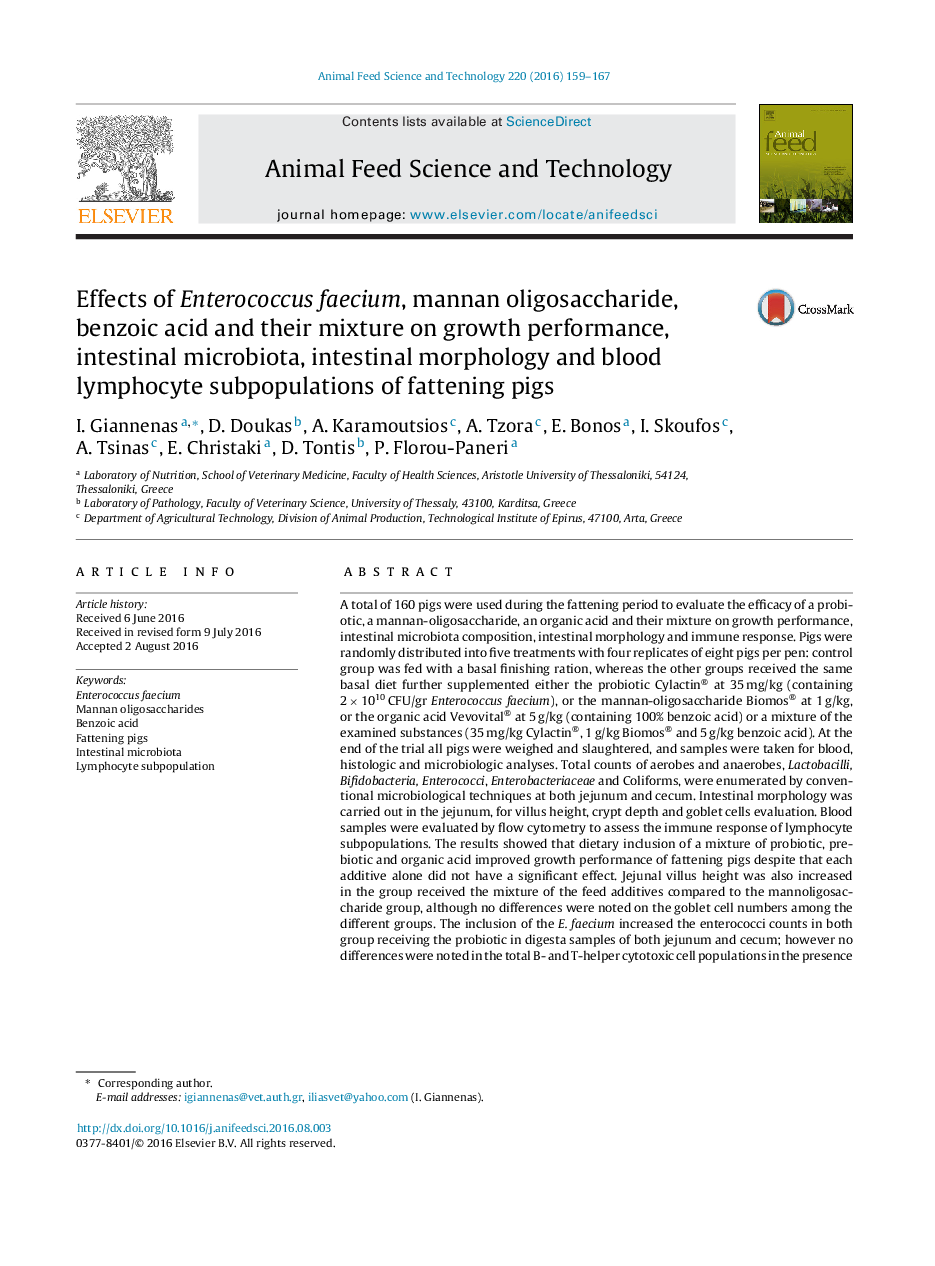| Article ID | Journal | Published Year | Pages | File Type |
|---|---|---|---|---|
| 2419249 | Animal Feed Science and Technology | 2016 | 9 Pages |
•Combined dietary use of additives improved growth performance of fattening pigs.•Combined dietary use of additives improved villus heights and villus to crypt ratio.•Enterococcus faecium use increased enterococci counts in jejunum and cecum.•In absence of challenge, pigs’ blood lymphocytes subpopulations were not affected.
A total of 160 pigs were used during the fattening period to evaluate the efficacy of a probiotic, a mannan-oligosaccharide, an organic acid and their mixture on growth performance, intestinal microbiota composition, intestinal morphology and immune response. Pigs were randomly distributed into five treatments with four replicates of eight pigs per pen: control group was fed with a basal finishing ration, whereas the other groups received the same basal diet further supplemented either the probiotic Cylactin® at 35 mg/kg (containing 2 × 1010 CFU/gr Enterococcus faecium), or the mannan-oligosaccharide Biomos® at 1 g/kg, or the organic acid Vevovital® at 5 g/kg (containing 100% benzoic acid) or a mixture of the examined substances (35 mg/kg Cylactin®, 1 g/kg Biomos® and 5 g/kg benzoic acid). At the end of the trial all pigs were weighed and slaughtered, and samples were taken for blood, histologic and microbiologic analyses. Total counts of aerobes and anaerobes, Lactobacilli, Bifidobacteria, Enterococci, Enterobacteriaceae and Coliforms, were enumerated by conventional microbiological techniques at both jejunum and cecum. Intestinal morphology was carried out in the jejunum, for villus height, crypt depth and goblet cells evaluation. Blood samples were evaluated by flow cytometry to assess the immune response of lymphocyte subpopulations. The results showed that dietary inclusion of a mixture of probiotic, prebiotic and organic acid improved growth performance of fattening pigs despite that each additive alone did not have a significant effect. Jejunal villus height was also increased in the group received the mixture of the feed additives compared to the mannoligosaccharide group, although no differences were noted on the goblet cell numbers among the different groups. The inclusion of the E. faecium increased the enterococci counts in both group receiving the probiotic in digesta samples of both jejunum and cecum; however no differences were noted in the total B- and T-helper cytotoxic cell populations in the presence or absence of the nutritional factors studied, although their ratio (CD4/CD8) was decreased in the group that received the mixture of the feed additives. In conclusion, dietary supplementation with a combination of probiotic, mannan-oligosaccharide and organic acid could promote growth in fattening pigs and improve their intestinal microbiota and functionality.
